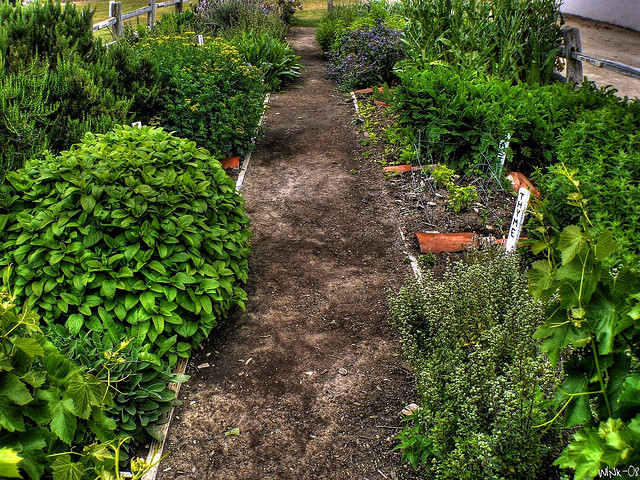
Aromatic plants, herbs and spices sometimes require as much caring as vegetables or flowers.
Decorate a separate garden with herbs, to enjoy them in your kitchen.
Aromatic plants can be planted by seeds to grow non gmo herbs anywhere in the garden (can find them on Amazon), but many of them can grow excessively if not properly cared for. For this reason, some gardeners prefer to separately arrange a garden with herbs.
Aromas of herb garden will delight you at least a few months a year, especially in late spring and early summer, when most herbs bloom.
Aromatic plants will attract bees, butterflies and other pollinating insects, increasing the chances for the other plants in your garden to get to their full potential every year.
Suitable Place for the Herb Garden
When you decide to decorate a garden with herbs in your yard, keep in mind some practical considerations which can ease your work.
The herb garden must be located as close to the kitchen so you do not lose too much time when you want to add a dash of flavor to fresh cooked foods.
Most herbs need sun throughout the day. Make sure the chosen space is sunny and the soil is sufficiently nourishing.
Ideal Size for the Herb Garden
Aromatic plants do not need much space in the garden, so ideal size depends on your needs and the variety of more or less herbs you want in your garden.
If you plan to dry the plants to consume them throughout the year or if you want to use them to make a natural potpourri, you’ll need a larger number of plants and a suitable space.
Relationship between perennial and annual plants is also important for the size of the garden. If you fill the whole space with perennials you will not easily make changes next year, depending on your needs.
Seedbeds in the Herb Garden
If you want your garden to have a really decorative function, you must use geometric shapes in arranging the seedbeds. The classic model for a decorative garden with herbs is made of four squares: a square space cut by two perpendicular alleys to allow your access to every plant.
Once you have divided your garden in geometric shapes, whether squares, circles or semicircles, plants can easily group and alleys will give your garden an element of consistency pleasant to the sight.
Skilled gardeners know that plants should be grouped according to their needs (light, water, nutrients needed) but you can combine these functional and aesthetic criteria, choosing to divide plants after colors and flavors.
Because perennials tend to expand from year to year, it is recommended to separate the annual herbs to create the herb garden suitable for your needs.

